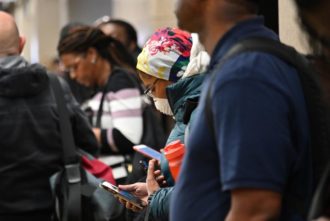By Dr. Harry J. Heiman and Rodney Lyn
It is now clear that COVID-19 is not an equal opportunity pandemic. As reflected in numerous reports by public health agencies, the media and the Federal Reserve Bank of Atlanta, COVID-19 is disproportionately affecting communities of color — especially the African-American community — as well as other communities with barriers to health, economic and social opportunities.
For those of us whose work focuses on health disparities, this situation comes as no surprise. Many reports have pointed to the high prevalence of chronic diseases as the underlying reason for this disproportionate impact. While part of the answer, this overlooks the underlying causes of increased chronic disease and other health conditions in racial and ethnic minority communities. The U.S. Department of Health and Human Services defines health disparities as health differences “closely linked with social, economic, and/or environmental disadvantage.” Increased chronic disease and disproportionate rates of COVID-19 are both symptoms of a much broader problem–the systemic racism that we as a society have for too long failed to meaningfully acknowledge and address.

The same historical and contemporary policies and practices that lead to racial residential segregation and barriers to education, housing, and economic opportunities also lead to increased health risks and worse health opportunities and outcomes. It is not by chance or due to lack of personal responsibility that there is a 13-year difference in average life expectancy between Buckhead and Bankhead in Atlanta. And there are similar disparities between urban and rural areas in our state.
Long before Dougherty County was devastated by COVID-19, it ranked 152nd among Georgia’s 159 counties in health outcomes. Our state consistently trails the nation on a range of health outcomes, including being one of the worst states for maternal mortality. In spite of the state Department of Public Health’s report that 60 percent of maternal deaths are preventable, little meaningful action has been taken to address the fact that this risk is three to four times greater for black mothers. As a society, we have accepted that it is easier to talk about “equal opportunity” than to ensure equal access to opportunities.
Given the longstanding health disparities in our state and in our country, it is critical that we not only track the disproportionate impact of COVID-19 on communities of color, but use that data to develop policies and practices to protect those communities.
To date, we have done a poor job tracking COVID-19 cases by race and ethnicity. According to the CDC, we lack data on race and ethnicity for more than half of all cases nationally. In Georgia, such data is missing or unknown for 25 percent of reported cases. Even figuring without this missing data, approximately 45 percent of cases and 49 percent of deaths are among African-Americans. This disparity is reflected in a recent CDC report showing that 83 percent of hospitalized COVID-19 patients in Georgia have been African-American. A recent New York Times report documented the disproportionate impact of the coronavirus on nursing homes with higher percentages of black or Latino residents.

Ensuring access to testing and treatment is also critical. To date, Georgia has established more than 100 drive-through testing sites, but few walk-in sites. People of color are overrepresented among those without access to a car, creating an unnecessary barrier to testing. At the same time, they are overrepresented among low-income workers, who are both more likely to be in essential industries and service jobs that increase their risk of exposure and less likely to have access to affordable health insurance coverage, due in part to Georgia’s failure to expand Medicaid. Those falling into the coverage gap, not eligible for Medicaid or a health insurance subsidy, were estimated at over 250,000 prior to the pandemic. This number is growing daily as record numbers of Georgia workers have lost their jobs.
People in low-income communities and communities of color are not only more likely to experience serious health complications from COVID-19, they are also at greater risk for social and economic consequences. A public health response requires addressing the social and economic issues that are integral to health and safety. This means ensuring a strong social safety net to support critical areas like economic assistance, food access, and housing stability.
There are urgent steps our state can take today to support Georgia families. These include economic assistance through the Temporary Assistance for Needy Families reserve funds, extending access and reducing barriers to food support, and enacting a moratorium on housing evictions and foreclosures. This must also include relief for borrowers, whether they are homeowners or landlords. As noted by colleagues from Georgia State University, Georgia Tech, and Emory University, families cannot provide a stable and secure environment for children or vulnerable seniors without stable housing.
Communities of color are disproportionately affected by longstanding health disparities as well as the health and economic crises due to COVID-19. Federal and state leaders must take targeted action now to ensure the health, safety and stability of those most impacted by this pandemic.
Dr. Harry J. Heiman is a clinical associate professor in the Department of Health Policy and Behavioral Sciences at the Georgia State University School of Public Health. Prior to joining GSU, he served as Director of the Division of Health Policy at the Satcher Health Leadership Institute at Morehouse School of Medicine, where he was also associate professor in the Department of Family Medicine. He also serves on the board of Georgians for a Healthy Future, a statewide consumer health advocacy organization.
Rodney Lyn serves as Interim Dean and Senior Associate Dean for Academic and Strategic Initiatives in the School of Public Health at Georgia State University. He is also Associate Professor in the Department of Health Policy and Behavioral Sciences.

